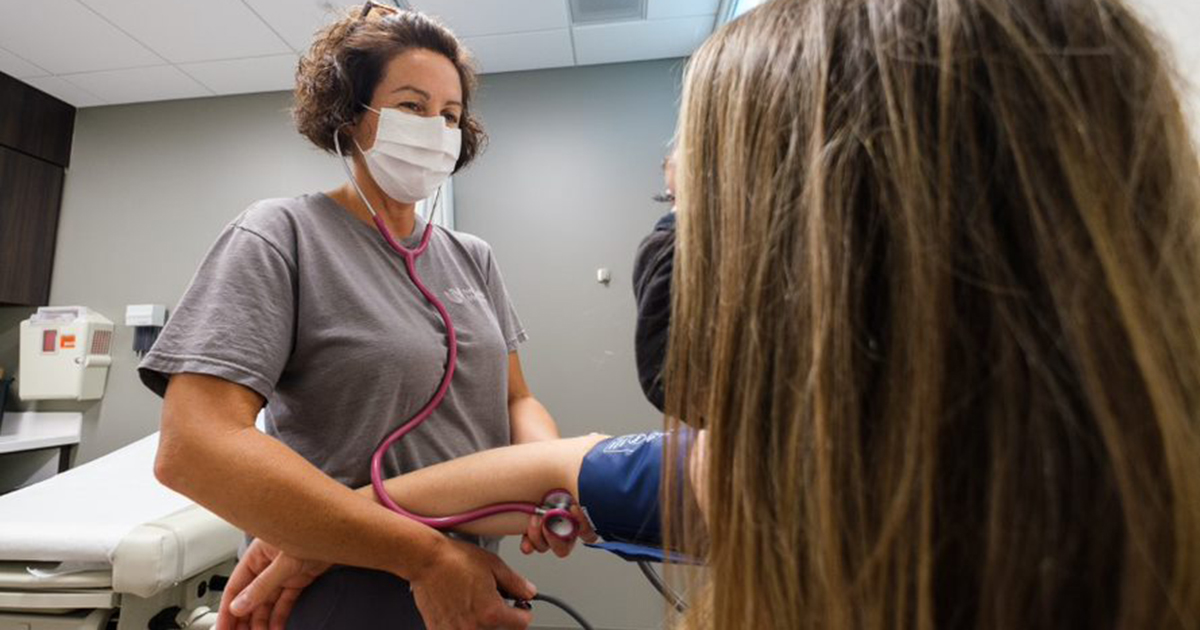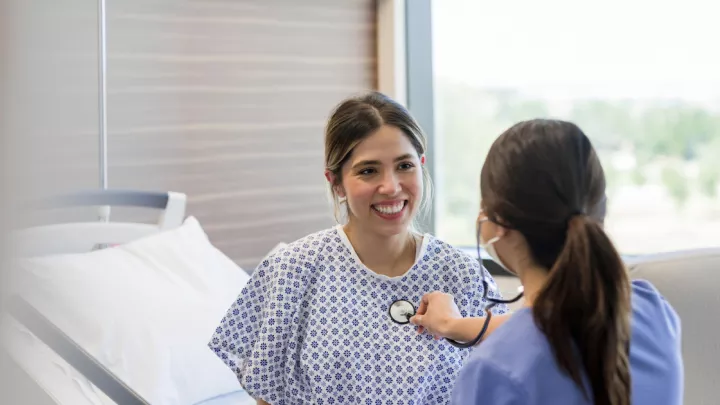13 preventive screenings: why they're important and who needs them most

Screenings save thousands of lives. By detecting treatable illnesses with an inexpensive screening, many people have avoided costly hospital care, surgeries and even terminal disease. That’s because screenings catch chronic diseases before they become a problem, so your care team can treat them effectively.
These 13 screenings are quick and easy – are you overdue for any of them?
1. Sexually transmitted infection screening: Chlamydia is the most common STI nationally and in Nebraska.
2. HPV screening: Two HPV types (16 and 18) cause 70% of cervical cancers and pre-cancerous cervical lesions.
3. Hepatitis C screening: Hepatitis C virus infection is associated with more deaths than the top 60 other reportable infectious diseases combined, including HIV.
4. Osteoporosis screening: 1 in 2 postmenopausal women and 1 in 5 older men are at risk of an osteoporosis-related fracture.
5. Immunizations: While not a screening, they're important for preventive care! Vaccines save 42,000 children from dying of preventable diseases in America every year.
| Screening | Who needs it? | Doctor |
|---|---|---|
| Sexually transmitted infection | Everyone 19+ | Primary care or OB-GYN |
| HPV | Women 21+ | Primary care or OB-GYN |
| Hepatitis C | People born between 1/1/1945 and 12/31/1965 | Primary care |
| Osteoporosis | Women 65+ | Primary care will refer you to an endocrinologist |
| Immunizations | Everyone | Primary care |
Screening for blood conditions
Too much of something – pressure, cholesterol or sugar – in your blood causes issues. If left untreated, these things cause serious disease or even death. All three issues – high blood pressure, high cholesterol and diabetes – can be detected and cared for.
6. Blood pressure screening: Over 100 million U.S. residents have high blood pressure (close to half the country). High blood pressure is the number one cause of cardiovascular disease-related deaths.
7. Lipid panel: 1 in 6 people in the United States have high cholesterol – which increases risk of stroke, heart disease and heart attack.
8. Diabetes screening: About 1 in 10 U.S. residents have diabetes.
| Screening | Who needs it? | Doctor |
|---|---|---|
| Blood pressure | Everyone 19+ | Primary care |
| Lipid panel | Everyone 19+ | Primary care |
| Diabetes | Everyone with a body mass index (BMI) > 25 | Primary care |
Cancer screenings
In 2020, there will be an estimated 1.8 million new cancer cases diagnosed and 606,520 cancer deaths in the United States.
9. Clinical skin examination: 31,500+ suspected melanomas and 278,000+ suspicious lesions detected in the U.S. since 1985.
10. Pap test: Pap smears prevented 105,000 to 492,000 cases of cervical cancer over the past 30 years in the U.S.
11. Breast cancer screening: Mammograms have reduced breast cancer deaths by nearly 40% in the U.S. since 1990.
12. Colon cancer screening: A colonoscopy reduces the risk of dying from colon cancer by 53%.
13. Low-dose CT scan (lung cancer): Nearly 90% of people with lung cancer die of the disease – but early detection greatly reduces the risk.
| Screening | Who needs it? | Doctor |
|---|---|---|
| Clinical skin examination | Everyone 19+ | Primary care or dermatologist |
| Pap test | Women 21+ | Primary care or OB-GYN |
| Breast cancer screening | Women 40+ | Primary care will refer you to a diagnostic radiologist |
| Colon cancer screening | Everyone 45+ | Primary care will refer you to a gastroenterologist |
| Low-dose CT scan | Smokers who are 55+ | Primary care will refer you to an interventional radiologist |
Statistic sources
- American Academy of Dermatology
- American Academy of Family Physicians
- American Cancer Society
- American College of Radiation
- American Diabetes Association
- American Heart Association
- American Journal of Clinical Oncology
- British Medical Journal
- Centers for Disease Control and Prevention.
- Healthgrades
- New England Journal of Medicine
- Omaha World-Herald
- US Preventative Services Task Force
- World Health Organization





